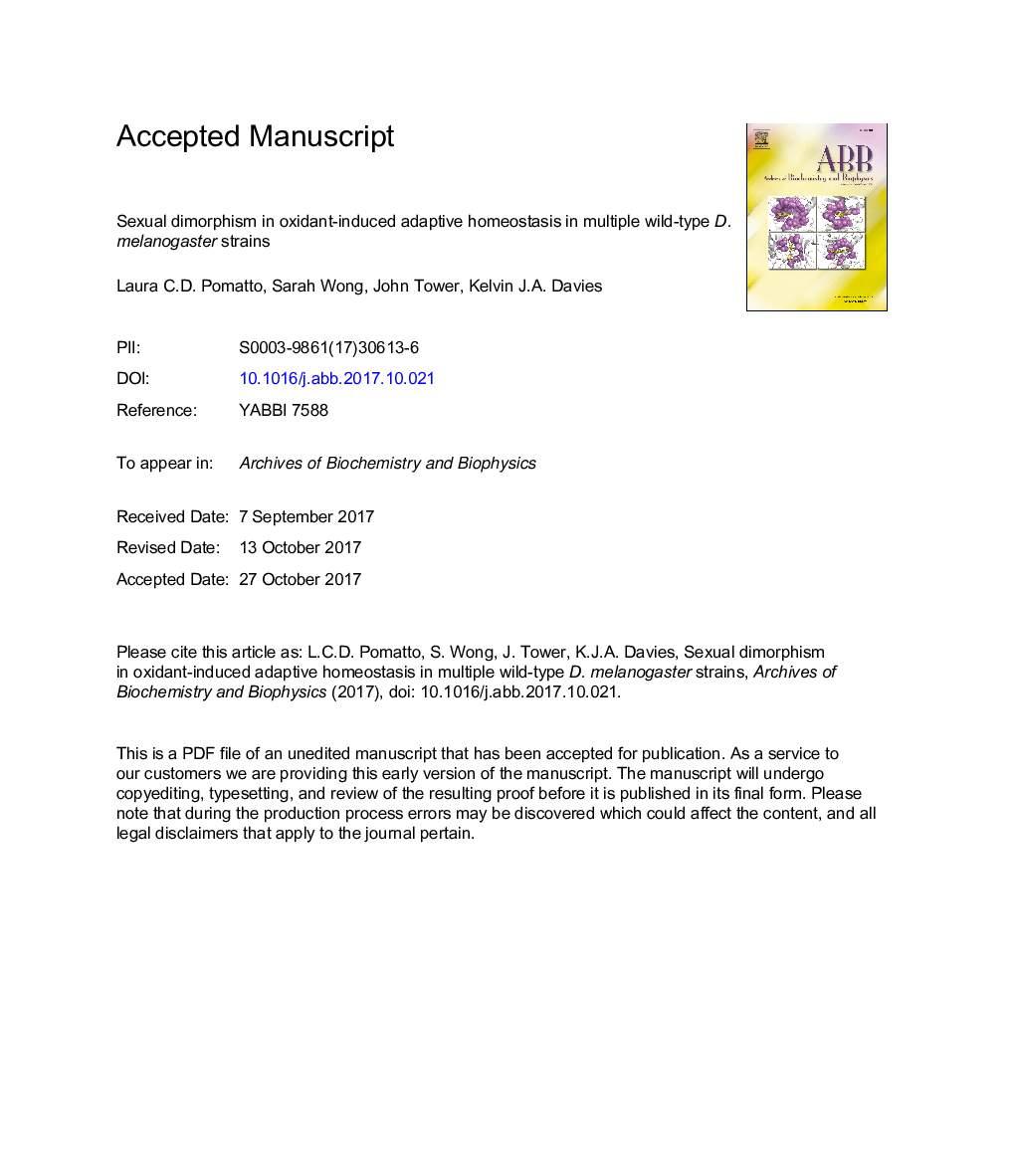| Article ID | Journal | Published Year | Pages | File Type |
|---|---|---|---|---|
| 8288876 | Archives of Biochemistry and Biophysics | 2017 | 29 Pages |
Abstract
Sexual dimorphism includes the physical and reproductive differences between the sexes, including differences that are conserved across species, ranging from the common fruit fly, Drosophila melanogaster, to humans. Sex-dependent variations in adaptive homeostasis, and adaptive stress responses may offer insight into the underlying mechanisms for male and female survival differences and into differences in chronic disease incidence and severity in humans. Earlier work showed sex-specific differences in adaptive responses to oxidative stressors in hybrid laboratory strains of D. melanogaster. The present study explored whether this phenomenon is also observed in wild-type D. melanogaster strains Oregon-R (Or-R) and Canton-S (Ca-S), as well as the common mutant reference strain w[1118], in order to better understand whether such findings are descriptive of D. melanogaster in general. Flies of each strain were pretreated with non-damaging, adaptive concentrations of hydrogen peroxide (H2O2) or of different redox cycling agents (paraquat, DMNQ, or menadione). Adaptive homeostasis, and changes in the expression of the Proteasome and overall cellular proteasomal proteolytic capacity were assessed. Redox cycling agents exhibited a male-specific adaptive response, whereas H2O2 exposure provoked female-specific adaptation. These findings demonstrate that different oxidants can elicit sexually dimorphic adaptive homeostatic responses in multiple fly strains. These results (and those contained in a parallel study [1]) highlight the need to address sex as a biological variable in fundamental science, clinical research, and toxicology.
Related Topics
Life Sciences
Biochemistry, Genetics and Molecular Biology
Biochemistry
Authors
Laura C.D. Pomatto, Sarah Wong, John Tower, Kelvin J.A. Davies,
